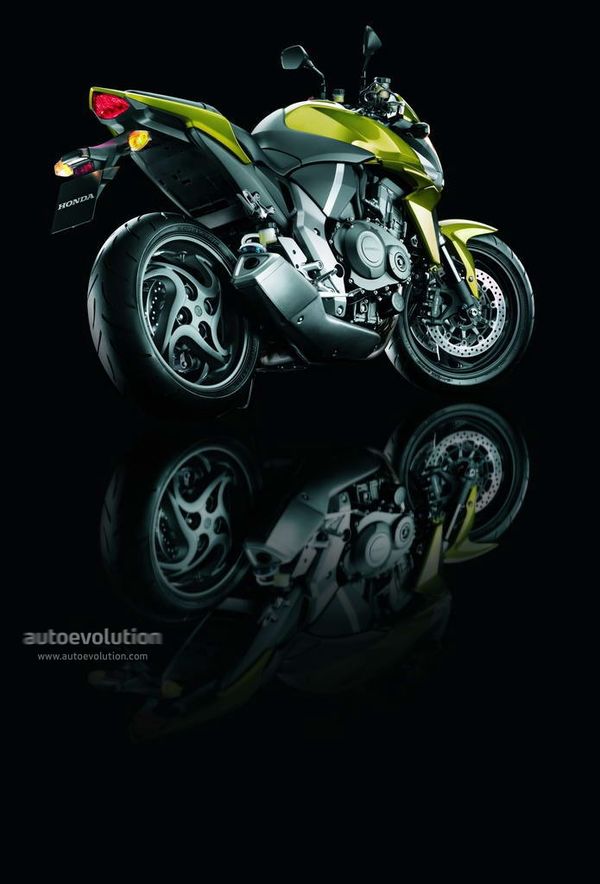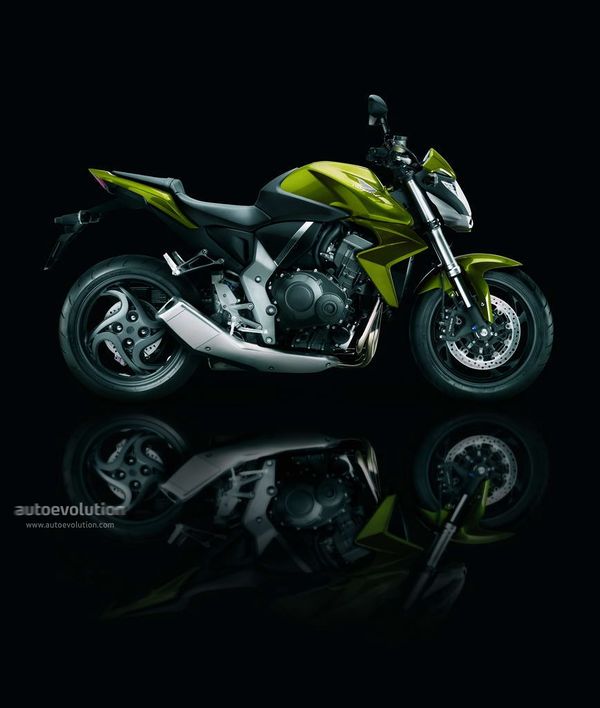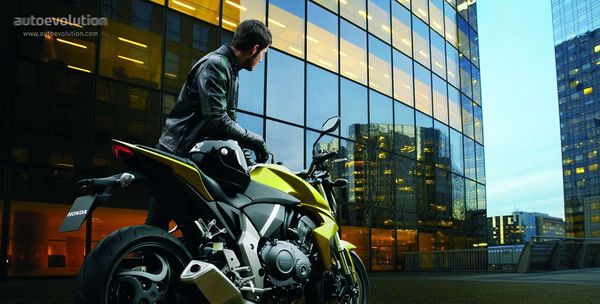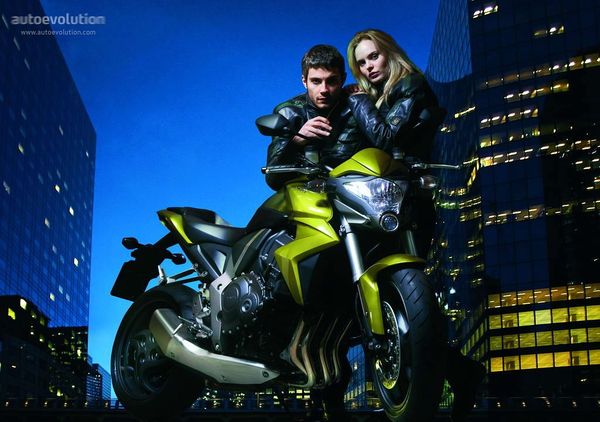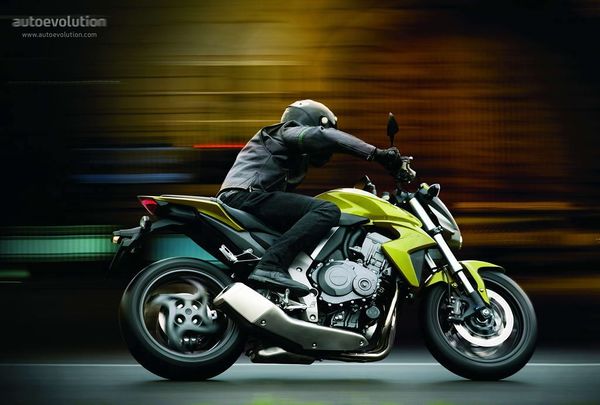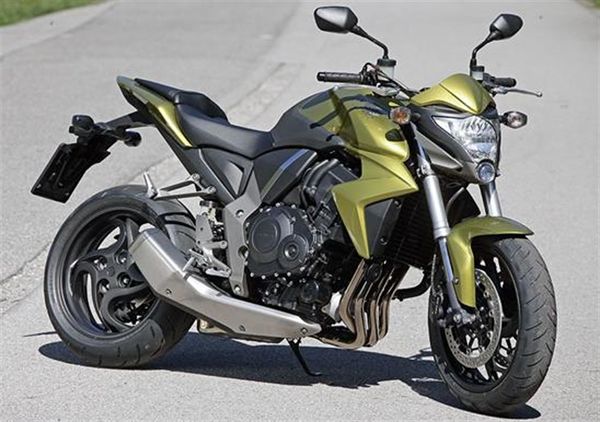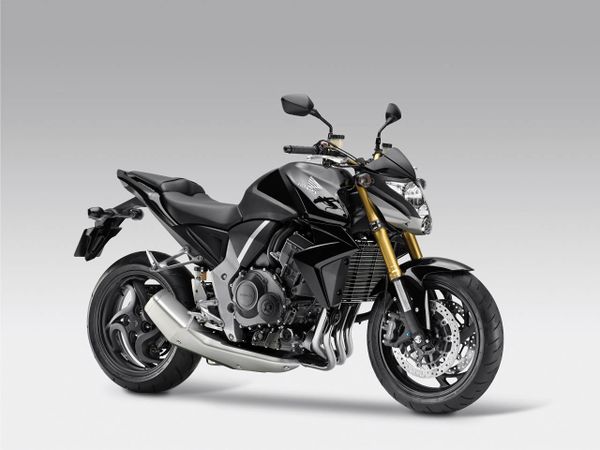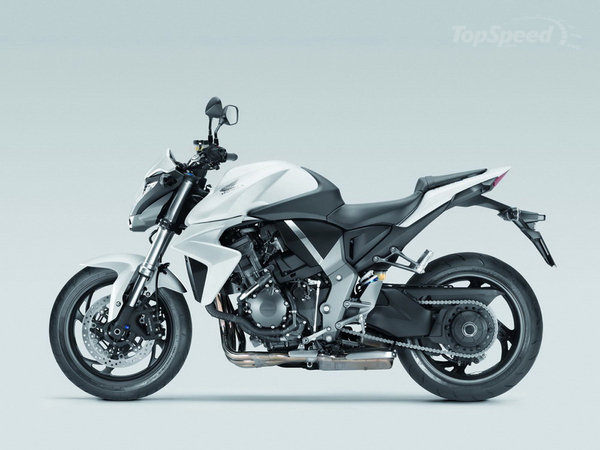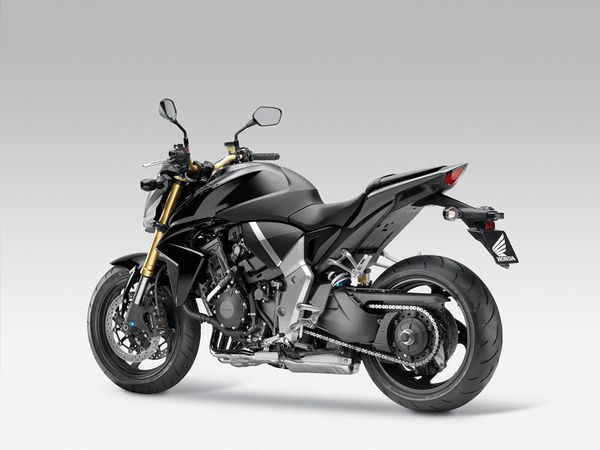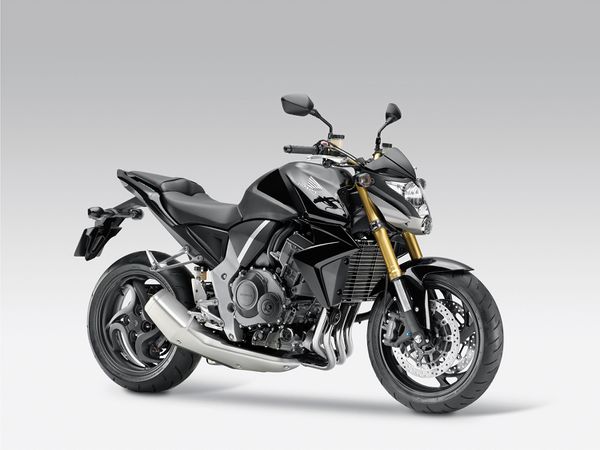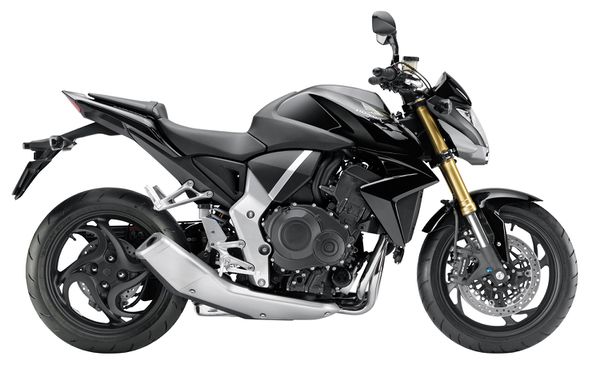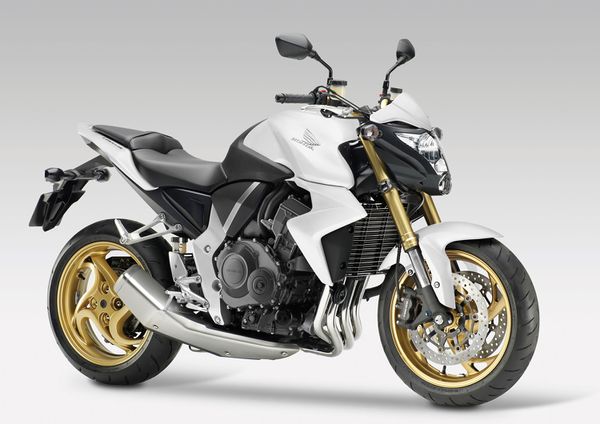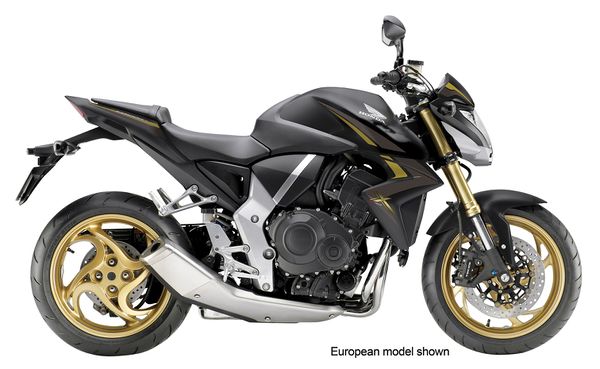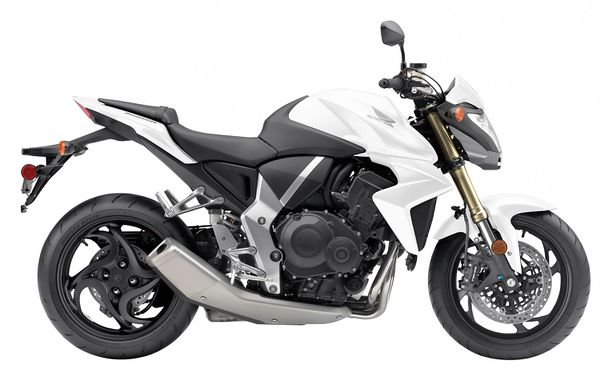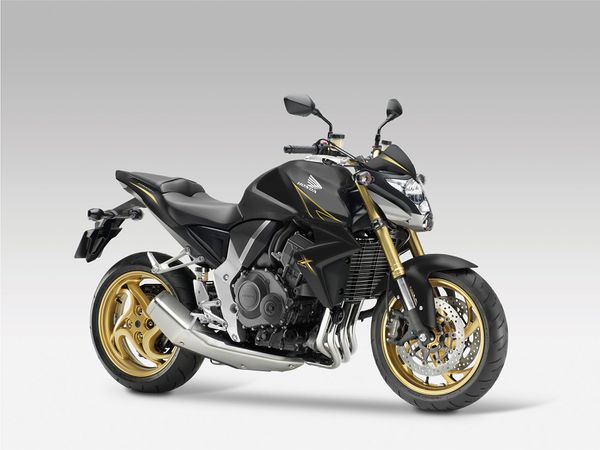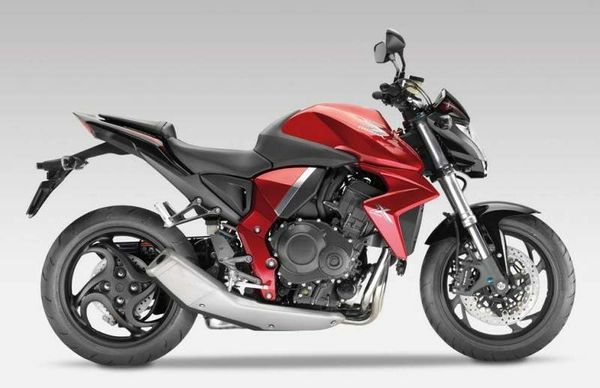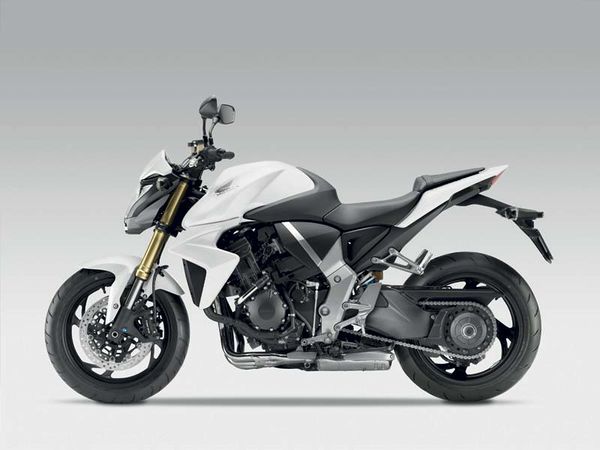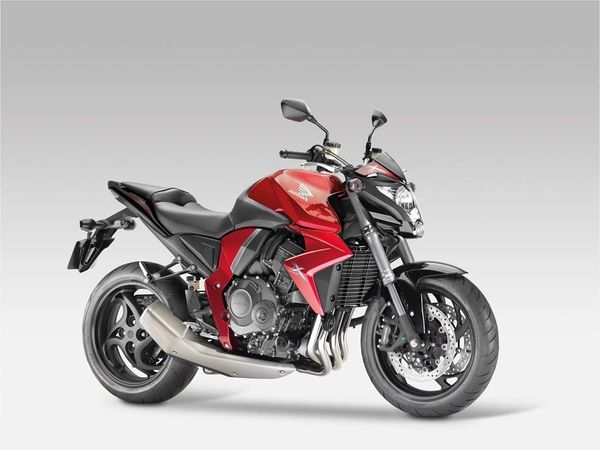Difference between revisions of "Honda CB1000R"
| Line 62: | Line 62: | ||
In addition, it has been fitted with die-cast aluminium wheels, a four-into-two exhaust system, a small, nose-fairing, a 43mm upside-down telescopic fork coupled to an adjustable monoshock in the rear, a dual seat, a digital instrumentation panel, an aluminium frame, dual front disc brakes and rear-mounted foot pegs. | In addition, it has been fitted with die-cast aluminium wheels, a four-into-two exhaust system, a small, nose-fairing, a 43mm upside-down telescopic fork coupled to an adjustable monoshock in the rear, a dual seat, a digital instrumentation panel, an aluminium frame, dual front disc brakes and rear-mounted foot pegs. | ||
==2008 Honda CB 1000 R== | |||
[[File:honda-cb1000-2008-4.jpg|600px|2008 Honda CB 1000 R]] | |||
[[File:honda-cb1000-2008-3.jpg|600px|2008 Honda CB 1000 R]] | |||
[[File:honda-cb1000-2008-2.jpg|600px|2008 Honda CB 1000 R]] | |||
[[File:honda-cb1000-2008-1.jpg|600px|2008 Honda CB 1000 R]] | |||
[[File:honda-cb1000-2008-0.jpg|600px|2008 Honda CB 1000 R]] | |||
Honda's CB 1000 R was first released in 2008, the Japanese company borrowing several features from the CBR1000RR. | |||
| Line 72: | Line 82: | ||
In the engine department it is powered by a liquid-cooled, four-stroke, 998cc, transverse four cylinder powerplant that was mated to a six-speed manual transmission with a chain final drive and can reach a maximum power output of 123 horsepower and 100 Nm of torque. | In the engine department it is powered by a liquid-cooled, four-stroke, 998cc, transverse four cylinder powerplant that was mated to a six-speed manual transmission with a chain final drive and can reach a maximum power output of 123 horsepower and 100 Nm of torque. | ||
==2010 Honda CB 1000R== | ==2010 Honda CB 1000R== | ||
Revision as of 17:39, 28 May 2019
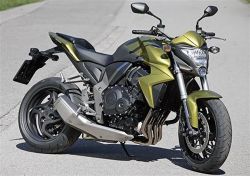 | |
| Manufacturer | Honda |
|---|---|
| Production | 2008 - 2015 |
| Class | Naked |
| Engine | liquid-cooled, four-stroke, transverse four cylinder, DOHC, 4 valves per cylinder |
| Bore / Stroke | 76.2mm x 76.2mm |
| Compression ratio | 11.2:1 |
| Horse Power | 122.97 HP (91.7 KW) @ 10000RPM |
| Torque | 73.76 ft/lbs (100.0 Nm) @ 8000RPM |
| Fuel system | EFI |
| Transmission | Gear box: 6-speed, manual Final Drive: sealed chain |
| Suspension | Front: 43mm upside-down telescopic fork Rear: adjustable monoshock |
| Brakes | Front: dual 310mm discs, 3-piston calipers Rear: single 256mm disc, 2-piston caliper |
| Front Tire | 120/70 ZR17 |
| Rear Tire | 180/50 ZR17 |
| Wheelbase | 56.89 inches (1445 mm) |
| Seat height | 32.6 inches (828 mm) |
| Weight | (dry), 217.0 kg (wet) |
| Manuals | Service Manual |
| Tech Specs · Brochures · Reviews · Ads · Videos | |
The Honda CB 1000R was a liquid-cooled, four-stroke, transverse four cylinder, DOHC, 4 valves per cylinder Naked motorcycle produced by Honda between 2008 and 2015. Max torque was 73.76 ft/lbs (100.0 Nm) @ 8000 RPM. Claimed horsepower was 122.97 HP (91.7 KW) @ 10000 RPM.
Engine
A 76.2mm bore x 76.2mm stroke result in a displacement of just 998.0 cubic centimeters.
Drive
The bike has a 6-speed, manual transmission. Power was moderated via the wet multi-disc, manual.
Chassis
It came with a 120/70 ZR17 front tire and a 180/50 ZR17 rear tire. Stopping was achieved via dual 310mm discs, 3-piston calipers in the front and a single 256mm disc, 2-piston caliper in the rear. The front suspension was a 43mm upside-down telescopic fork while the rear was equipped with a adjustable monoshock. The wheelbase was 56.89 inches (1445 mm) long.
2008 Honda CB 1000R
The 2008 MY Honda CB 1000R has, at its heart, a liquid-cooled, four-stroke, 998cc, transverse four cylinder powerplant that was paired to a six-speed manual transmission with a chain final drive that can produce a claimed 123 horsepower and 100 Nm of torque.
In addition, it has been fitted with die-cast aluminium wheels, a four-into-two exhaust system, a small, nose-fairing, a 43mm upside-down telescopic fork coupled to an adjustable monoshock in the rear, a dual seat, a digital instrumentation panel, an aluminium frame, dual front disc brakes and rear-mounted foot pegs.
2008 Honda CB 1000 R
Honda's CB 1000 R was first released in 2008, the Japanese company borrowing several features from the CBR1000RR.
2009 Honda CB 1000R
The 2009 MY Honda CB 1000R has standard features such as die-cast aluminium wheels, a four-into-two exhaust system, a small, nose-fairing, a 43mm upside-down telescopic fork coupled to an adjustable monoshock in the rear, a dual seat, a digital instrumentation panel, an aluminium frame, dual front disc brakes and rear-mounted foot pegs.
In the engine department it is powered by a liquid-cooled, four-stroke, 998cc, transverse four cylinder powerplant that was mated to a six-speed manual transmission with a chain final drive and can reach a maximum power output of 123 horsepower and 100 Nm of torque.
2010 Honda CB 1000R
The 2010 MY Honda CB 1000R boasts a maximum power output of 123 horsepower and 100 Nm of torque from its four-stroke, liquid-cooled, 998cc, transverse four cylinder powerplant that paired to a six-speed manual transmission with a sealed chain final drive.
Also, it has been fitted with die-cast aluminium wheels, a four-into-two exhaust system, a small, nose-fairing, a 43mm upside-down telescopic fork coupled to an adjustable monoshock in the rear, a dual seat, a digital instrumentation panel, an aluminium frame, dual front disc brakes and rear-mounted foot pegs.
2011 Honda CB 1000R
The 2011 MY Honda CB 1000R has standard features such as die-cast aluminium wheels, a four-into-two exhaust system, a small, nose-fairing, a 43mm upside-down telescopic fork coupled to an adjustable monoshock in the rear, a dual seat, a digital instrumentation panel, an aluminium frame, dual front disc brakes and rear-mounted foot pegs.
In addition, it can produce a claimed 123 horsepower and 100 Nm of torque from its liquid-cooled, four-stroke, 998cc, transverse four cylinder powerhouse that was mated to a six-speed manual transmission with a sealed chain final drive.
2011 Honda CB1000R
Fast, aggressive, yet maneuverable and confidence-inspiring: the 2010 Honda CB1000R. This machine brings superbike performance to the street level, all in a timeless fighter concept and with extreme attention to details. The heart of the CB1000R comes from the double R racing machine, but everything has been tuned for a much easier operation.
The riding position was brought upwards, but still retains an aggressive forward stance for blazing highway hauls. With a revised suspension and combined ABS, riding the 2010 Honda CB1000R has now become also much safer, allowing motorcyclists to enjoy more of what this bike can do.
2012 Honda CB 1000R
The 2012 MY Honda CB 1000R has, at its heart, a four-stroke, air-cooled, 998cc, transverse four cylinder powerplant, paired to a six-speed manual transmission with a chain final drive, that can reach a maximum power output of 123 horsepower and 100 Nm of torque.
Standard fittings for this machine include a digital instrumentation display, an aluminium frame, dual front disc brakes coupled to a single disc in the rear, a nose-fairing, a 43mm upside-down telescopic front fork, a 43mm upside-down telescopic front fork and an adjustable monoshock as a rear suspension.
2013 Honda CB1000R
The 2012 CB1000R is Honda's recipe for offering experienced riders a really thrilling and rewarding experience. Based on the mighty liter-class CBR engine and with an upgraded frame, the CB1000R puts everything on display, with its naked attire. A muscular streetfighter like few others, the 2012 CB1000R packs an extremely well-distributed, centralized mass, for excellent maneuverability and a lighter feel.
With a specially-engineered chassis, created for a swifter, sharper response, the 2012 CB1000R is THE canyon carver, while decent ergonomics make it a worthy choice for daily rides, as well. From the race track to the streets, the CB1000R went a long way, but its racey character remained whole.
2013 Honda CB 1000R
The 2013 MY Honda CB 1000R comes equipped with a digital instrumentation display, an aluminium frame, dual front disc brakes coupled to a single disc in the rear, a nose-fairing, a 43mm upside-down telescopic front fork, a 43mm upside-down telescopic front fork and an adjustable monoshock as a rear suspension.
In the engine department it is powered by a liquid-cooled, four-stroke, 998cc, transverse four cylinder powerplant that was paired to a six-speed manual transmission with a chain final drive that can produce a claimed 123 horsepower and 100 Nm of torque.
2014 Honda CB 1000R
The 2014 MY Honda CB 1000R boasts a maximum power output of 123 horsepower and 100 Nm of torque from its four-stroke, liquid-cooled, 998cc, transverse four cylinder powerplant that was mated to a six-speed manual transmission with a chain final drive.
Also, it has fittings such as a digital instrumentation display, an aluminium frame, dual front disc brakes coupled to a single disc in the rear, a nose-fairing, a 43mm upside-down telescopic front fork, a 43mm upside-down telescopic front fork and an adjustable monoshock as a rear suspension.
2015 Honda CB 1000R
The 2015 MY Honda CB 1000R has been equipped by the Japanese engineers with a digital instrumentation display, an aluminium frame, dual front disc brakes coupled to a single disc in the rear, a nose-fairing, a 43mm upside-down telescopic front fork, a 43mm upside-down telescopic front fork and an adjustable monoshock as a rear suspension.
In addition it can produce a claimed 123 horsepower and 100 Nm of torque from its four-stroke, 998cc, transverse four cylinder powerhouse that was paired to a six-speed manual transmission with a sealed chain final drive.
